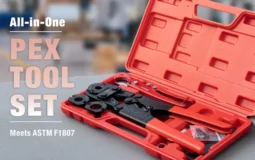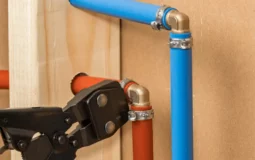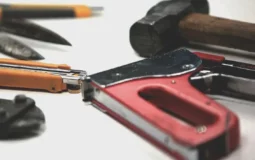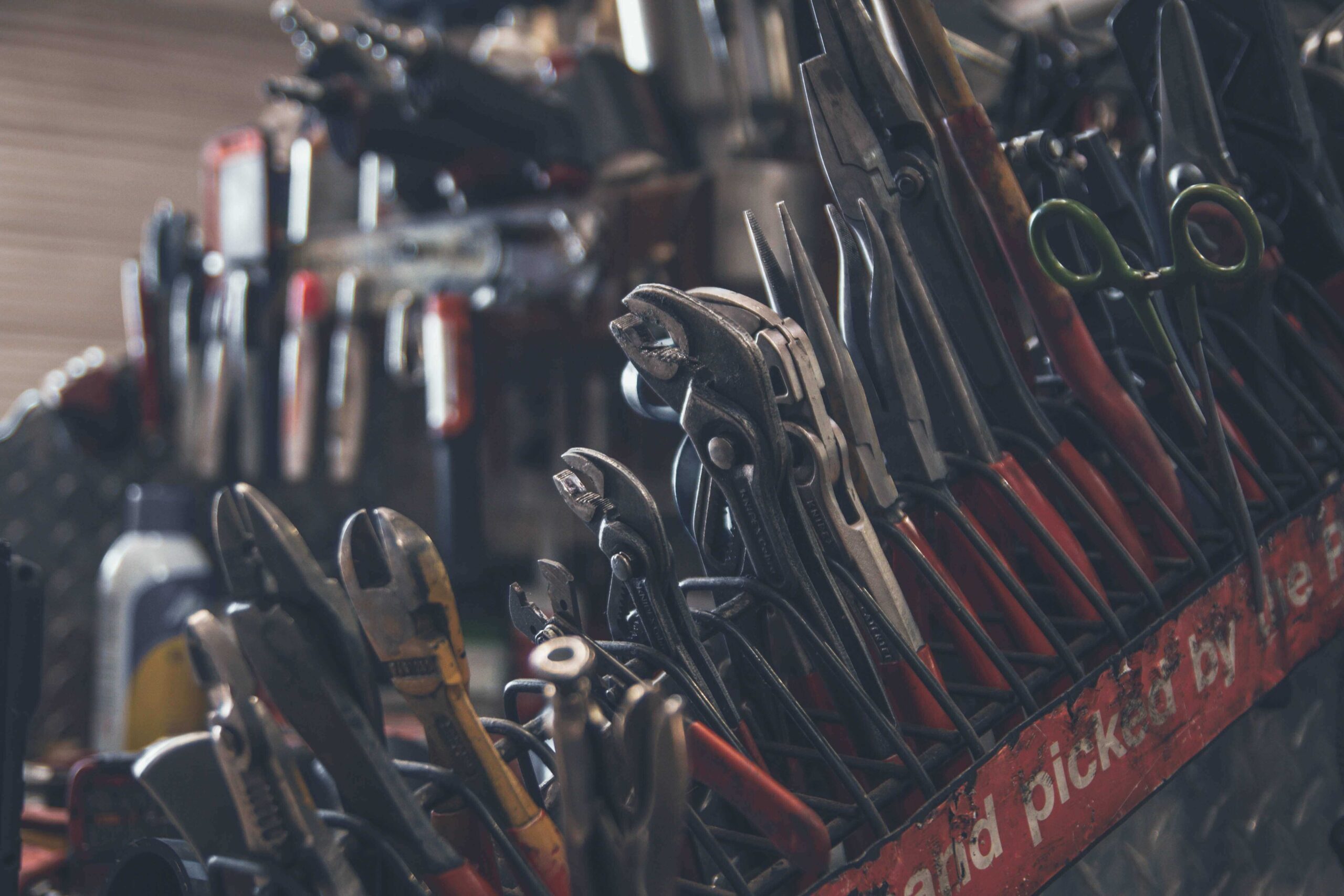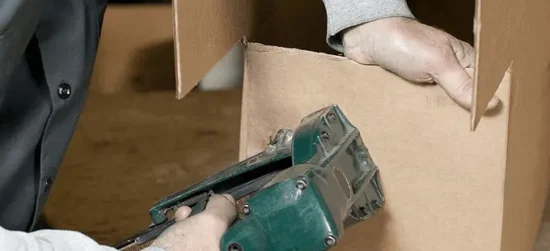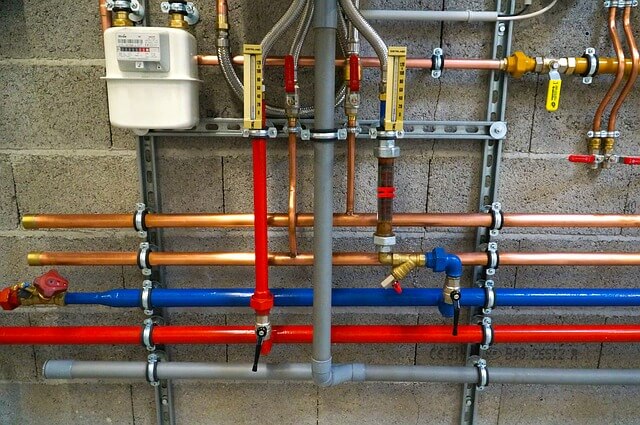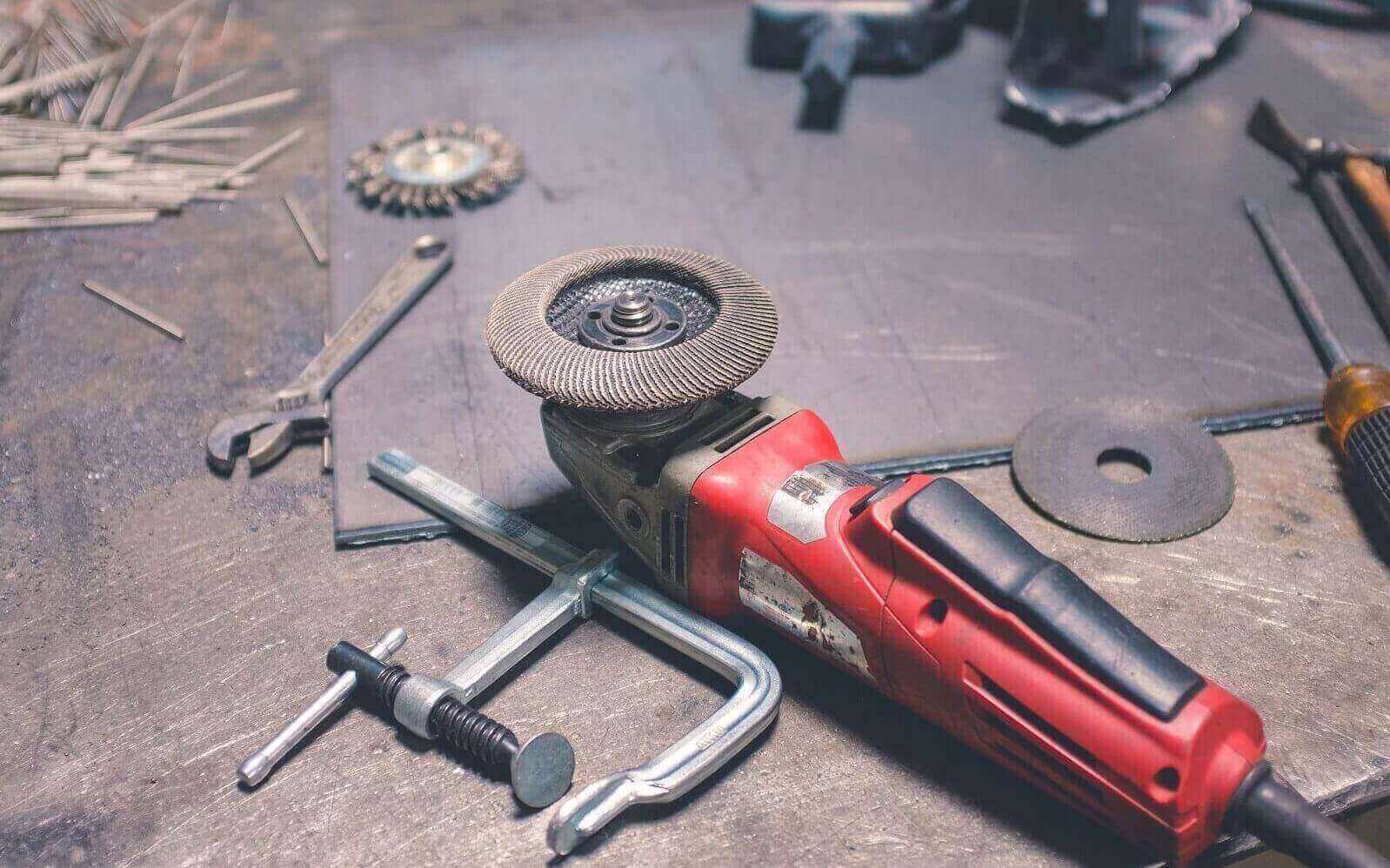There is an old joke among woodworkers: “You can never have too many clamps!“ And this also applies to parallel clamps.
With durable resin-covered jaws, heavy-duty screws, comfortable grip, and a beefy bar, a high-quality parallel clamp is evidence proving that the craftsman actually cares about his product.
But while you can’t have too many clamps, there are actually too many models on the market to choose from!
This makes it harder to start diving into woodworking as a newcomer. So why don’t you take a shortcut and have a look at our recommendations of the best parallel clamps you can buy below?
Best Parallel Clamps On The Market Right Now
All products listed are independently selected, although we may receive affiliate commissions if you buy something through our links. Ratings and prices are accurate and items are in stock as of the time of publication.
Jet Parallel Clamps - Top Pick
If money is not really a problem and all you need for your project are reliable, heavy-duty, and well-crafted clamps, the parallel wood clamps from Jet is your best bet.
These clamp sets are available in various sizes, from the small 12-inch version to the huge 60-inch one. Whatever your woodworking project is, Jet can always give you a high-quality tool.
The Jet parallel jaw clamps have many unique features that you can’t easily find in other products.
The first example is the Precision Rule measurement system that can provide more accurate readings. They also feature multiple movable rail stands, helping improve this precision and making it more convenient to clamp or spread.
These parallel clamps are rugged models, but this doesn’t mean they are hard to work with. In fact, thanks to the ergonomic design, you can get the job done with less effort.
The sliding system will help you keep tabs on your work while the “no-mar” jaws can prevent any damage that may occur during the whole operation.
Not having only fancy features, Jet clamps are also durable and reliable. Thanks to the fully-plated sturdy backbone and the non-marring composite resin jaws, they can prevent corrosion pretty well.
But do those amazing features translate well into great performance?
It’s not hard to see the Jet parallel clamps can work great with any kind of wood project. The head will stay where you put it, not sliding down and smashing your hand, which is a common issue in other products.
And to put the cherry on top, Jet even provides a generous lifetime warranty for their clamps. However, to own one of these awesome products, you may accept a relatively high cost, according to the price on Amazon. But in our opinion, they are really worth the cost when you work on large or serious woodworking projects.
Pros.
- Ergonomic design
- Many unique features
- Easy to adjust
- Perfect parallel jaw design
- Consistent and reliable
- Comfortable Sumogrip handle
- Non-marring material
- Great clamping force
Cons.
- Expensive
Bessey K Body REVO Parallel Clamps - Runner Up
Bessey K Body REVO is a famous parallel clamp series from one of the leading companies in this industry. The previous products of this series have received mostly positive feedback from customers, so how does this newer Bessey clamp compare to them?
Bessey has introduced a lot of new improvements in the K Body REVO fixed jaw parallel clamps, starting right from the jaw.
The improved design enables the jaw to stay in place once you put it, all ready for clamping. As a result, it’s easier to set or adjust the clamp while gluing up. In the socket where you apply the spindle, Bessey has also equipped a friction-resistant cup.
This newer version is also able to handle up to a maximum clamping force of 7000N – 2000N more than its predecessors.
Additionally, the two-part grip handle has been redesigned so that it can receive a hex driver or key, providing a greater clamping force if necessary. This is a big plus for those who have issues with the wrist or just want to clamp faster.
There are removable pressure caps, making the Bessey K Body the best clamps for glue-ups and clamping surfaces of solvent-resistant paint. This helps produce delicate pieces for fine woodworking tremendously.
The bar also features two removable and adjustable supports – which Bessey calls “rail protectors” – to avoid any contact between it and the wood. On the other hand, the tail support can help maintain the clamping level. All those supports are compatible with the TK-6 – the table clamp from Bessey.
But there are times changes are not actually welcome.
Many customers have complained about the bar, which is higher than the older versions. So if you use them at the same time, you will need to shim the hold K Body clamp a little bit.
Pros.
- Soft ergonomic handle
- Fast jaw movement
- Secure, non-slip clamping
Cons.
- Many flimsy plastic parts
- Higher bar compared to older versions.
Jorgensen Cabinet Master Parallel Clamps - Best Value
Jorgensen is another reputable name among the woodworker community. The original clamps (made before they were bought by a foreign company) were great products, so can these newer clamps live up to our expectations?
Well, there aren’t many different things between the older and current versions.
The only thing we can notice is the handle, which is now rubberized instead of being made from wood. Aside from that, the clamp heads and the bare are almost indistinguishable.
The Jorgensen Cabinet Master parallel clamps have always been praised for the jaw design.
You can clip various materials with this clamp, from wood to composite or plastic. With multiple sizes available, you can always pick up a suitable parallel clamp set in the Cabinet Master series for other tasks besides general clamping as well, including gluing-up or even corner clamping.
Thanks to the deep throat depth, these clamps provide optimized pressure distribution, making sure that even big areas can receive even pressure properly. You can expect them to stay parallel to prevent your wood pieces from bowing or lifting during your task.
Jorgensen also keeps other handy features such as the locking system that can keep the jaws secure in place and prevent them from slipping. The ergonomic handle is two-component molded to provide a soft and comfort grip.
And the best part about these clamps is that you can use them one-handed. They are hefty but function well, especially when you use it on a flat surface.
But compared to the original modes, the new Jorgensen parallel clamps seem to have slightly lower clamping power due to the smaller ACME screws.
Pros.
- Rapid action movement
- Distribute clamping pressure evenly
- Comfortable handle
- Secure locking system
- Can be used one-handed
Cons.
- Smaller screws and lower clamping power
Irwin 24-Inch Parallel Clamps - For Small Projects
Irwin Tools is a company that you can always buy an affordable product such as this 24-Inch parallel clamp. It’s a great choice for any new woodworking or just need a tool for a small project.
It comes with the ProTouch grip with an ergonomic grip to reduce stress on your hands. And Irwin also equips it with a secure locking mechanism to hold all your wood pieces firmly in place.
Apparently, this parallel clamp can prevent glue adhesion. Any experienced woodworker can tell how gruesome it is when the glue constantly sticks to your clamps.
But keep in mind that the Irwin parallel clamp also has many limitations.
Though it does a pretty solid job, this clunky model is a little hard to handle, especially when you need to glue up things fast. The capacity is limited compared to other products, while the construction isn’t made from high-quality materials that can hold up well over time.
Pros.
- Affordable
- Secure locking mechanism
- Optimized pressure distribution
- Resist glue adhesion
- Ergonomic handle
Cons.
- Clunky, hard to use
- Limited capacity
- Cheap materials
Bora 40-Inch Parallel Clamp - The Most Overlooked
Although Bora isn’t the first name people think of when it comes to woodworking clamps, this 40-inch parallel clamp is a decent option that is worth your consideration.
The padded jaws can ensure constant, and evenly-distributed pressure while not damaging your workpieces. They are not too tight or too loose, and if it can actually handle a 1100lbs pressure as Bora has claimed, this clamp is a decent choice for heavy-duty tasks.
Bora has also equipped the jaws with the passive locking feature, which helps them stay in place when you adjust them.
The handle is pretty big but still easy to maneuver. You can use it to release and slide the jaw along the bar to quickly your workpieces.
Overall, the Bora 40-inch parallel clamp is something you usually expect from other more well-known brands. But it does have a problem with the bars, which are not completely parallel. You can work around this by doing some fine-tuning.
Pros.
- Easy to use, comfortable handle
- Padded jaws
- Can maintain constant pressure
- non-slip jaw
- High clamping force
Cons.
- Need some adjustments
How To Find The Right Parallel Clamp
Size
There is not obviously a universal size for all parallel clamps. Depending on the projects you often work on, you can choose a bigger size to handle them. Manufacturers often put out multiple sizes from each series to the market, from 12 inches to even 60 inches.
Clamping Force
When the jaws are not strong enough to withstand the clamping force, they may blend easily and result in a broken clamp.
No one wants to buy a lot of parallel clamps just because we need to work with both small and big projects. That’s why models with a huge clamping force are always preferred since you can put them into you no matter how big your workpieces.
The minimum clamping force should be 1000lbs, and you should avoid any model below that.
Material
Since not only the parallel variant but all woodworking clamps are constantly subjected to huge force, they need to be built from strong materials. This not only ensures the clamp doesn’t crack under pressure but also extends the lifespan.
Aluminum is a durable metal and often the first choice of manufacturers who want to make high-quality parallel clamps. Many even improve the quality of the construction further by treating aluminum with heat or using aluminum alloys.
However, those materials and processes usually result in high prices. When you aren’t really in need of a heavy-duty model or your project is not that big, you can totally opt for cheaper materials.
Usually, steel (and steel alloys) is a decent alternative to aluminum. Though it’s significantly heavier, steel can make sure your parallel clamp is able to handle heavy loads.
The last option is plastic. It’s not a popular material for woodworking clamps since manufacturers can’t use it to build long-lasting, durable models.
Handle and Protector Pads
The handle should enable you to move the jaws quickly. It’s hard to stabilize the workpieces sometimes, so you need to clamp them right away. And a soft grip is also a great help when it can reduce stress and strain on your hands.
There is another part that not many users pay attention to – the pad at the foot of the parallel clamp. It’s a small yet important feature since this pad can keep the whole clamp in a stable position during the operation.
Jaws
The jaws are what hold your workpieces directly. You need to make sure that the jawbone is parallel and able to withstand powerful clamping force while distributing it evenly. Inexperienced users who are not familiar with all the jaws design should ask their sellers for advice before buying.
Spreader
If you need to spread the workpieces more often than squeeze them, consider models with a spreader. It will become handy in your projects later.
Some Questions
What can I benefit from a parallel clamp?
The most popular application of parallel clamps is to help you assemble cabinet boxes. The parallel jaws keep the workpieces in place while distributing pressure evenly across the face of the jaws.
Do I need anything else to assemble cabinet boxes?
Besides some parallel clamps, you should also utilize the corner (right angle) clamps, which help you join two pieces together perpendicularly.
Can I use a parallel clamp for welding?
Typical parallel clamps are not the best choice for welding since they are designed mainly for woodworking. You can consider C clamps instead.
Which size of a parallel clamp should I choose?
In each lineup, manufacturers often offer multiple sizes, including 12, 24, 31, 50, and 60 inches (not all of them are always available).
Usually, woodworkers usually 24-inch parallel clamps most of the time, unless their woodworking projects are too big or too small. You can buy a bunch of 24-inch models at first and get extra clamps in other sizes later when needed.
Do I need to clean my parallel clamps?
Cleaning your clamps is very important, especially when you have done a lot of gluing up. You can use a putty knife or even a steel brush to get rid of the dried glue on the face of the jaws.
Final Thought
In one way or another, you can totally finish your woodworking project without a parallel clamp. But this usually means more effort and time than necessary or even frustration and a broken cabinet!
With any model from the best parallel clamps above, you can finally forget about those troubles.
Choosing the right clamp that goes well with your project depends on the project itself, but if you want a safe option, we recommend Jet parallel clamps. They are durable and easy to use, providing a powerful and evenly distributed clamping force to help build your product.
